For swimwear brands targeting the competitive markets, creating a diverse and compelling collection is paramount. Today’s consumers seek more than just a swimsuit; they desire confidence, style, and function for every occasion, from poolside relaxation to surfing waves. A thoughtfully curated collection that caters to a wide range of tastes, body types, and values will ensure your brand stands out and captures customer loyalty.
While it’s easy to underestimate the variety in swimwear, the market is filled with an incredible range of designs, materials, and cuts. This guide explores 12 essential swimwear types, providing the insights your brand needs to build a collection that resonates with your target audience and aligns with your unique identity.
The Core Silhouettes: Foundations of Every Collection
These two styles are non-negotiable staples in any swimwear line.
1.Bikini
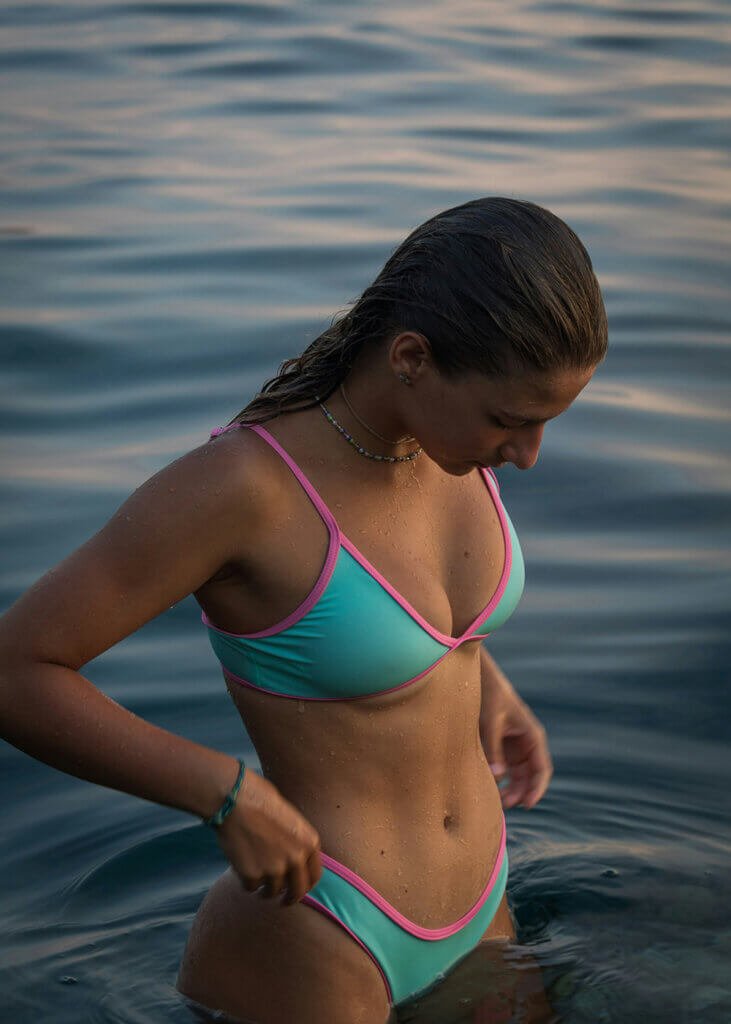
The most iconic and recognized style in women’s swimwear is the bikini. As a two-piece set, it offers unmatched versatility in style and coverage.
Since its introduction in 1946 by Louis Réard, the bikini has evolved from a daring statement to a symbol of freedom and body confidence.
Offering a variety of cuts is key to appealing to a broad audience:
- Triangle Bikini: A classic, string-tied design that flatters most body types.
- Bandeau Bikini: A strapless style perfect for customers seeking even tanning.
- High-Waisted Bikini: A retro-inspired cut offering more midsection coverage and curve accentuation.
- Underwire Bikini: Provides lingerie-style structure for enhanced lift and shape.
- Sporty Bikini: Features fixed straps or racerback tops for active consumers.
- String Bikini: Minimal and adjustable with delicate ties at the sides, perfect for sun-lovers seeking a bold, customizable fit.
- Micro Bikini: A daring, ultra-minimal version with barely-there coverage, often used in editorial or luxury resort wear.
2. One-Piece Swimsuit
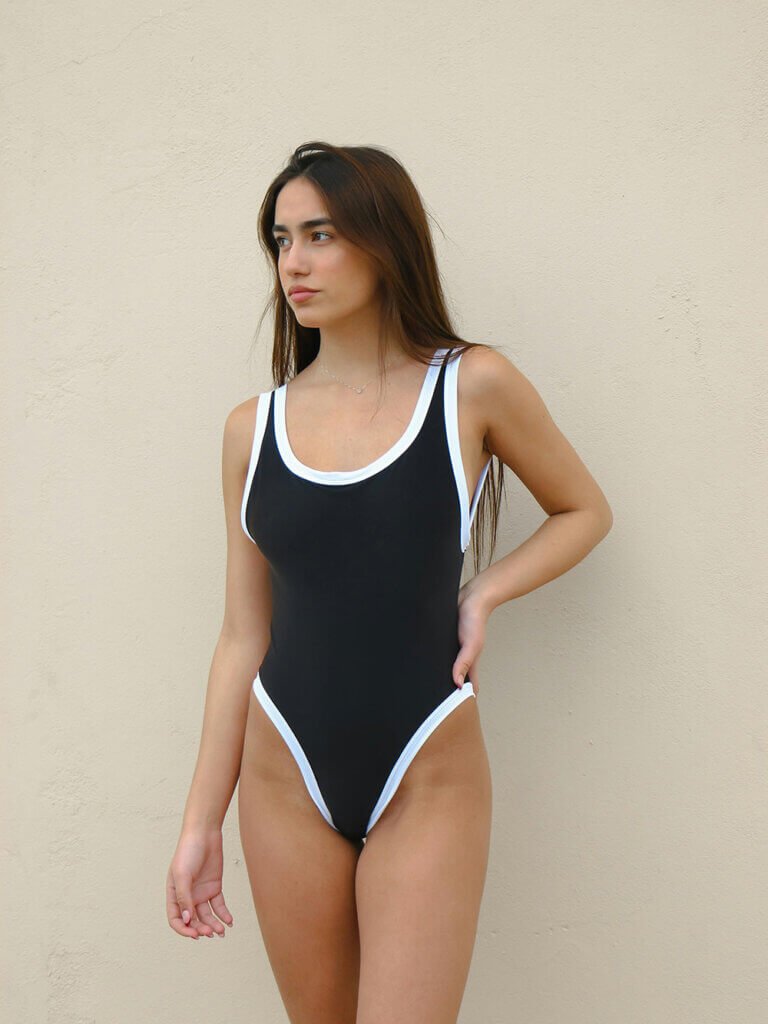
Celebrated for its balance of comfort, coverage, and elegance, the one-piece swimsuit is a single garment covering the torso. Once primarily associated with athletics, it has transformed into a fashion essential for modern swimwear collections.
Its evolution began in the early 1900s with swimmer Annette Kellerman’s form-fitting design, which prioritized movement. Today’s variations cater to diverse aesthetic preferences:
- High-Cut One-Piece: Elongates the legs with a retro-inspired silhouette.
- Plunge One-Piece: A deep-V neckline offers a sophisticated and sensual look.
- Cut-Out One-Piece: Blurs the line between a one-piece and a bikini with intriguing side or front cut-outs.
- Belted One-Piece: Creates a cinched waist for a touch of vintage glamour.
- Plus-Size One-Piece: Utilizes inclusive cuts and shaping fabrics to celebrate all body types.
The Modern Hybrids: Blending Style and Coverage
These styles cater to the customer who wants something between the classic one-piece and the traditional bikini.
3. Monokini
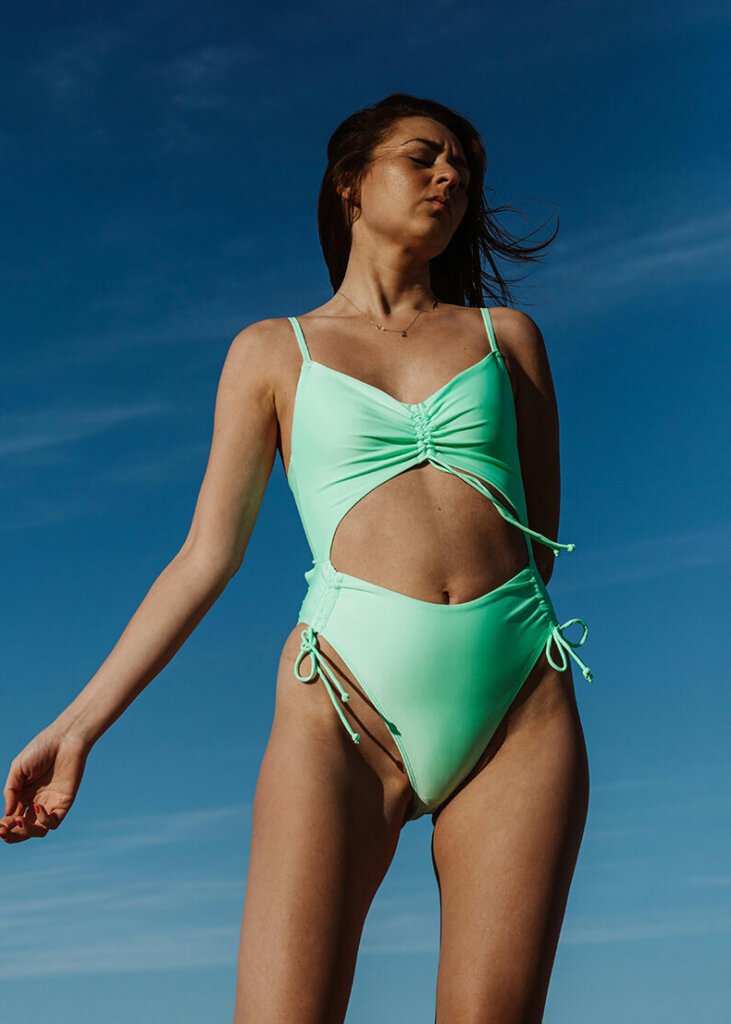
The monokini strategically connects a top and bottom piece with fabric panels or straps, creating a style that exists between a bikini and a one-piece.
First conceptualized in 1964 by Rudi Gernreich, the modern monokini is a sophisticated balance of sensuality and style. It’s a perfect statement piece for resort and high-fashion collections.
Popular variations include:
- Side-Cut Monokini: With deep cut-outs along the waist to emphasize curves.
- Front-Cut Monokini: A plunging central opening that elongates the torso.
- Strappy Monokini: Multiple strap connections create an architectural, fashion-forward look.
- Mesh or Lace-Panel Monokini: Sheer inserts add texture and subtle coverage.
- Asymmetric Monokini: Single-shoulder or uneven cuts for modern edge.
4. Tankini
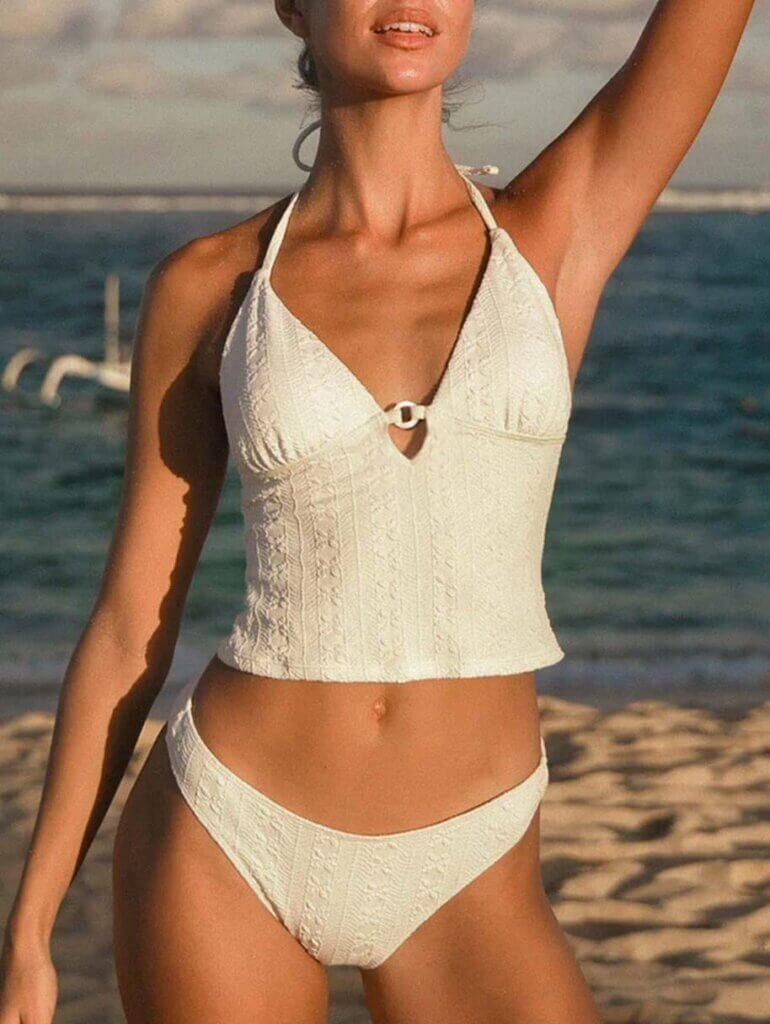
Combining a tank-style top with bikini bottoms, the tankini offers the modesty of a one-piece with the two-piece convenience of a bikini. It rose to popularity in the late 1990s as an alternative for women seeking more coverage. Its mix-and-match potential makes it a versatile commercial choice, allowing brands to appeal to a wide range of consumers.
Popular style include:
- Classic Tankini: Straight-cut neckline and adjustable straps for everyday elegance.
- Halter Tankini: Ties at the neck, adding support and a flattering upper line.
- Flared or A-Line Tankini: Offers relaxed drape for a graceful, feminine look.
- Crop Tankini: Shorter length for a sporty, youthful vibe.
- Ruffled or Layered Tankini: Adds texture and charm while softening the silhouette.
Performance & Function: The Activewear Crossover
This category targets the growing market of active and wellness-focused consumers.
5. Sporty & Athletic Swimwear
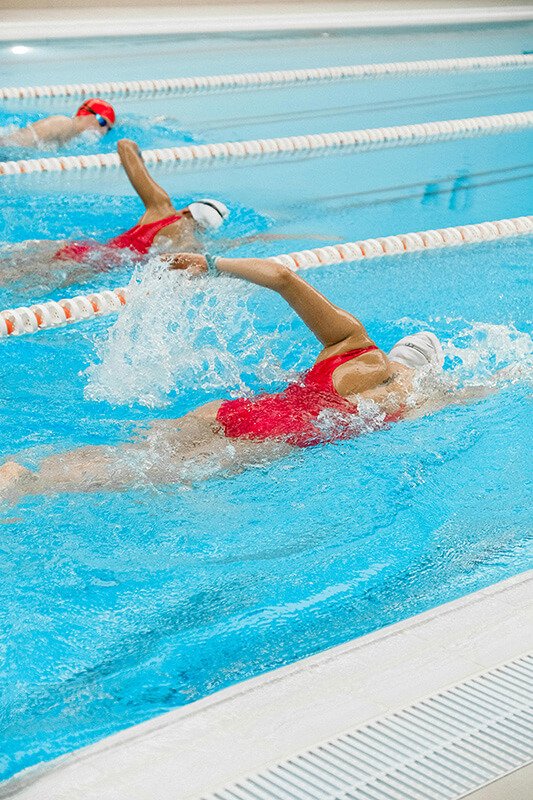
Designed for performance and durability, athletic swimwear serves women who swim, surf, or train. These pieces feature supportive structures, secure fits, and fabrics that allow for easy movement. With roots in early 20th-century competitive swimming, this category is now a staple for any woman leading an active lifestyle. Key styles include:
- Racerback Swimsuits: For unrestricted arm movement.
- Zip-Front One-Pieces: For easy wear and a modern edge.
- Long-Sleeve Surf Suits: For sun protection during outdoor activities.
6. Rash Guard
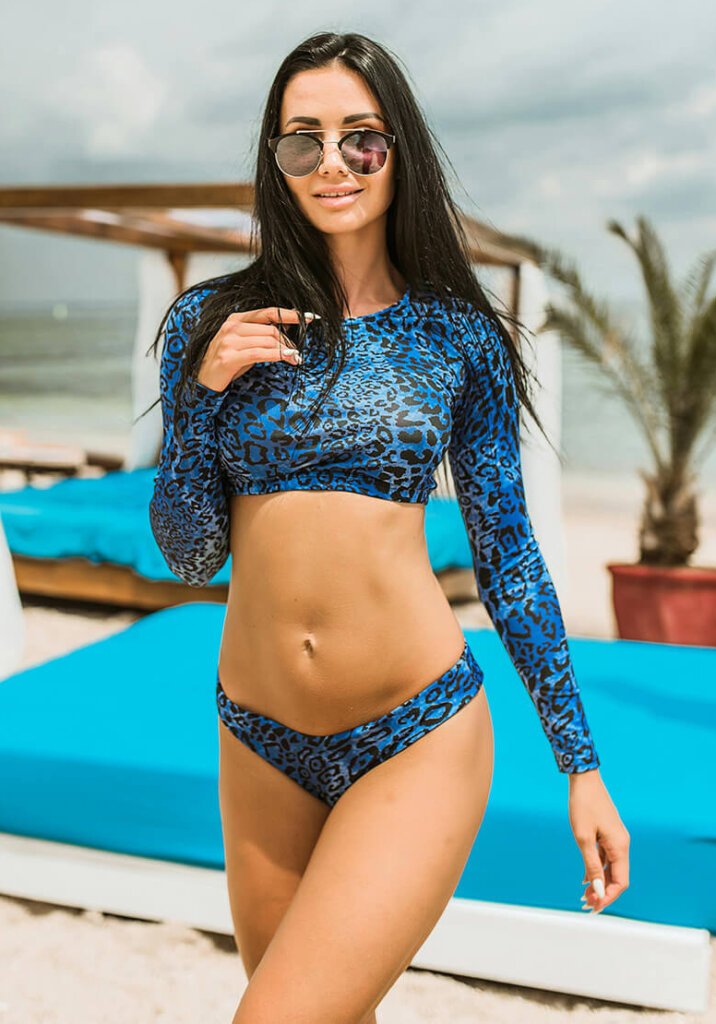
A cornerstone of functional swimwear, the rash guard offers superior sun protection and style. Popularized by Australian surfers in the 1970s, it protects the skin from sun and abrasion. It is typically made from stretchy, quick-drying fabric with a UPF rating.
Modern rash guard sets are available in various cuts and combinations to fit different needs and brand directions:
- Classic Long-Sleeve Rash Guard: Provides maximum sun protection with a streamlined fit.
- Short-Sleeve Rash Guard: Ideal for warm climates and recreational swimming.
- Cropped Rash Guard: Offers a sporty, modern edge for activewear-inspired collections.
- Rash Guard with Leggings: Ensures full coverage for modest swimwear lines.
- Zip-Front Rash Guard: Adds convenience and a sleek, technical aesthetic.
Inclusivity & Niche Appeal: Broadening Your Customer Base
These styles demonstrate a brand’s commitment to serving diverse needs and preferences.
7. Swim Dress
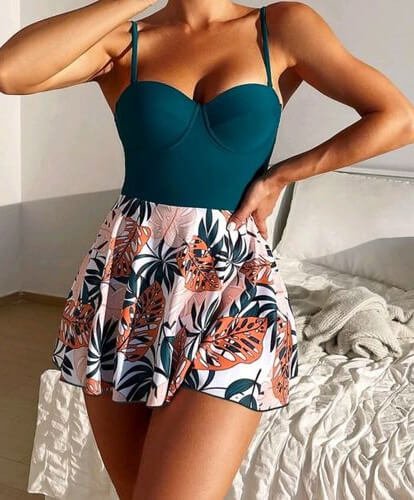
The swim dress blends the feminine charm of a dress with the practicality of a swimsuit. It consists of a one-piece base with an attached skirt, providing extra coverage and comfort. Evolving from early 20th-century modest swimwear, the modern swim dress is a symbol of confidence and inclusivity. It is especially popular among women who prefer a flattering silhouette with more coverage.
Contemporary swim dresses come in a variety of styles suited for different preferences and brand identities:
- Classic A-Line Swim Dress: Offers a universally flattering fit with gentle flare.
- Ruched or Draped Swim Dress: Adds texture and shaping for a feminine touch.
- Tank-Style Swim Dress: Blends sporty comfort with a smooth, structured look.
- Underwire or Padded Swim Dress: Combines support with elegance for fuller figures.
- Printed or Color-Blocked Swim Dress: Brings energy and personality to the silhouette.
8. Modest Swimwear (Burkini)
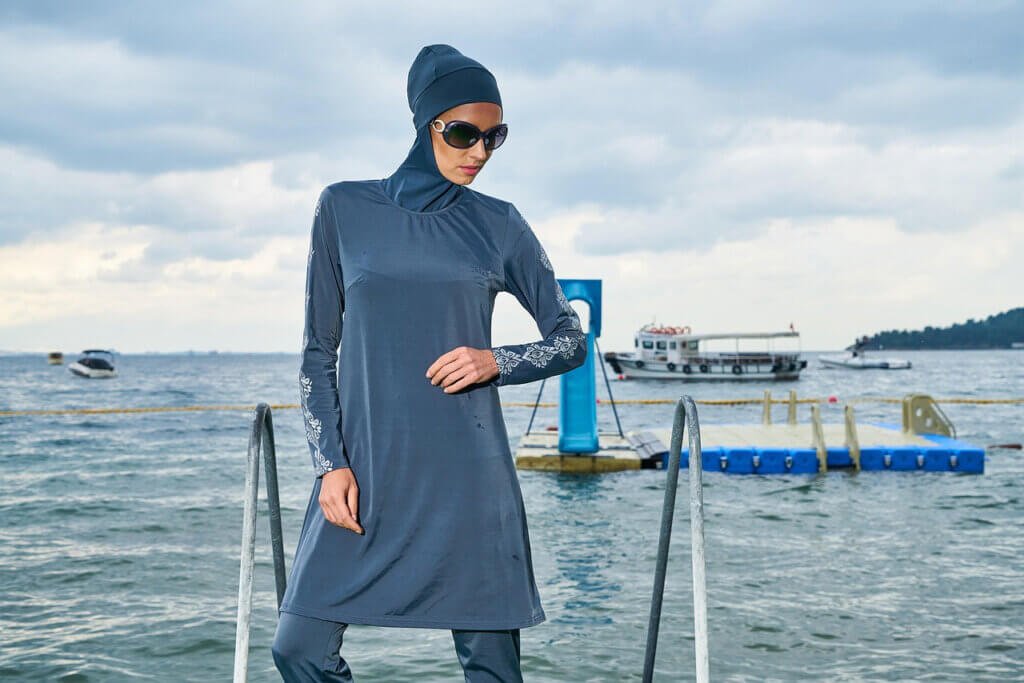
Often known as a burkini, modest swimwear provides full-body coverage while using lightweight, flexible, and quick-drying materials. The style typically includes long sleeves, leggings, and a head covering.
Created in 2004 by Aheda Zanetti, it was designed to allow Muslim women to participate in water activities comfortably. Including this style is a powerful way to cater to an underserved market and embrace inclusivity.
Aesthetic & Fabric Focus: Defining Your Brand’s Signature Look
The material and finish of a swimsuit can define a collection’s entire mood and appeal.
9.Metallic & Shiny Swimwear
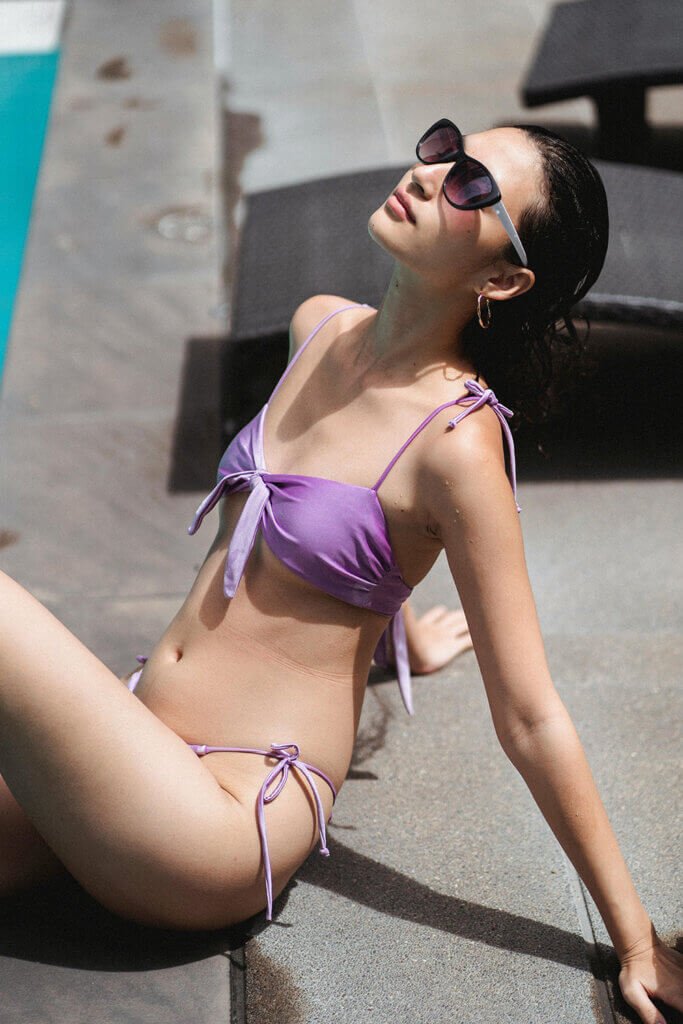
Crafted from lustrous fabrics like lamé or metallic-coated spandex, this swimwear style makes a bold statement. Drawing inspiration from the 1970s disco era, metallic swimwear has made a major comeback, driven by social media’s appetite for photogenic styles.
Whether it’s a metallic one-piece or a holographic bikini, these eye-catching designs are perfect for brands targeting a glamorous, fashion-forward consumer.
10. Printed Swimwear
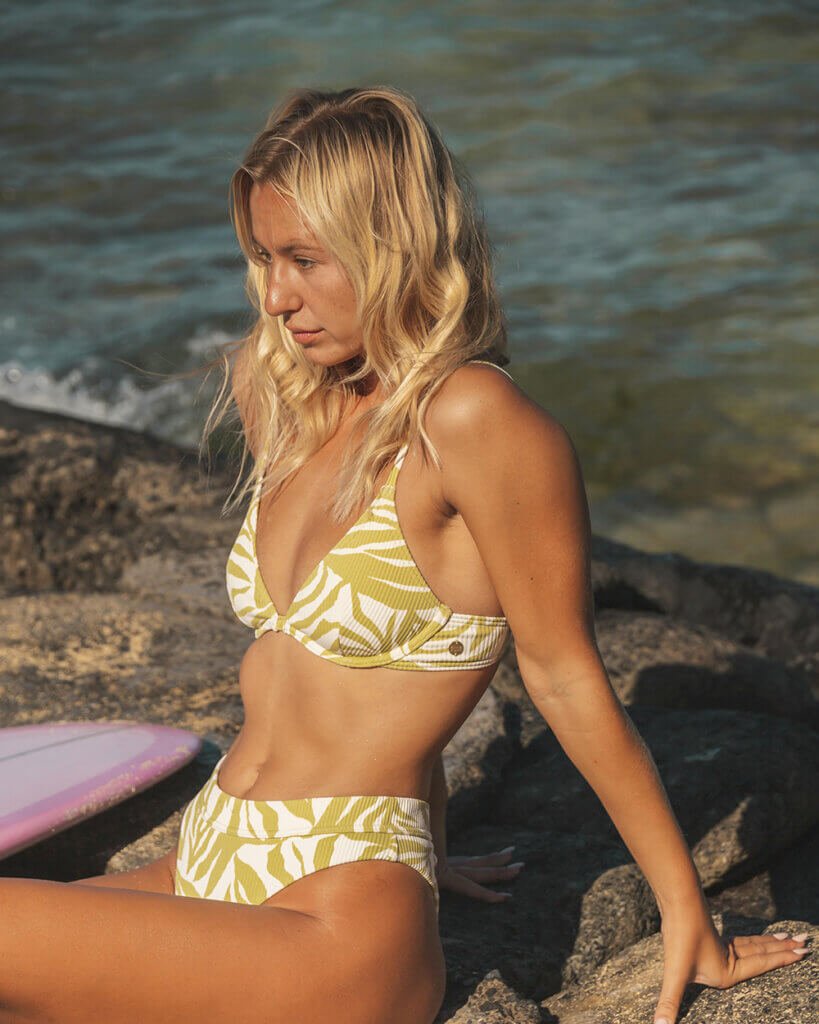
Prints transform swimwear into an artistic canvas, allowing brands to express a unique aesthetic identity through color and pattern. From tropical florals to bold animal prints, the possibilities are endless.
Advances in digital printing have made it possible to create vibrant, durable designs while minimizing fabric waste, aligning with more sustainable production methods.
11. Textured Swimwear
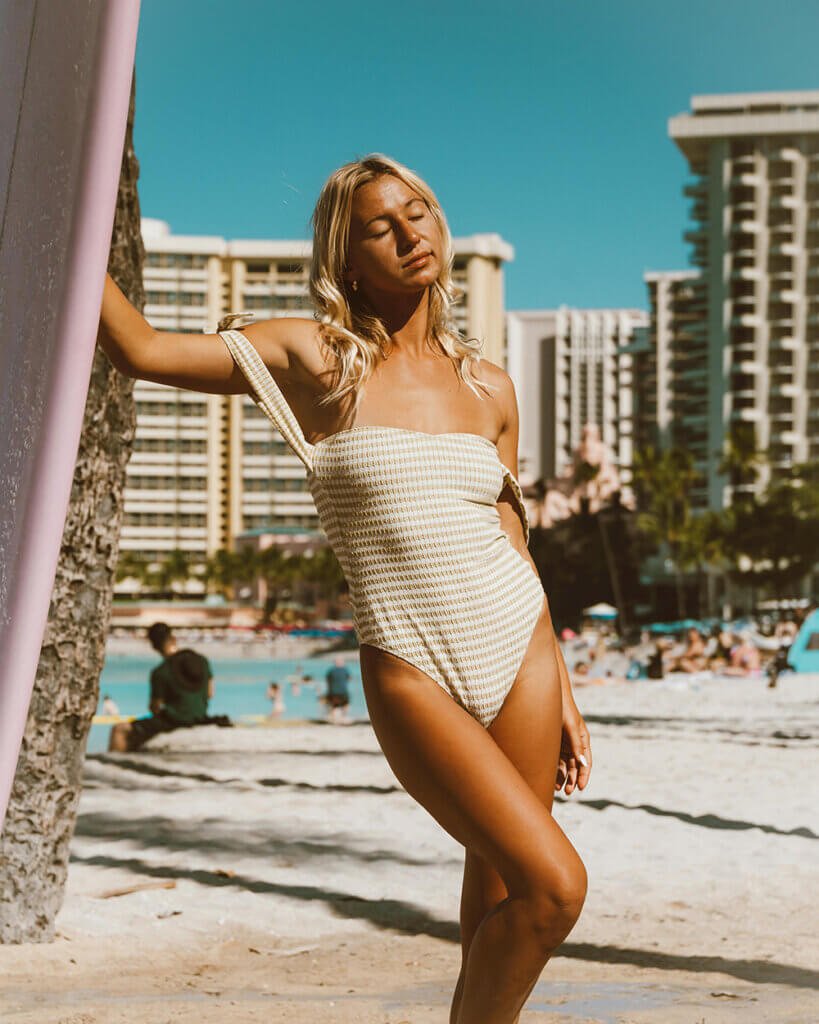
Textured swimwear adds sophistication and dimension through the fabric itself. Materials like ribbed, crinkle, seersucker, or smocked fabrics provide a rich tactile quality that elevates simple silhouettes.
This trend is ideal for minimalist, boutique, and high-end collections, offering a sense of luxury that resonates with discerning consumers.
Values-Driven Design: The Future of Swimwear
12. Sustainable Swimwear
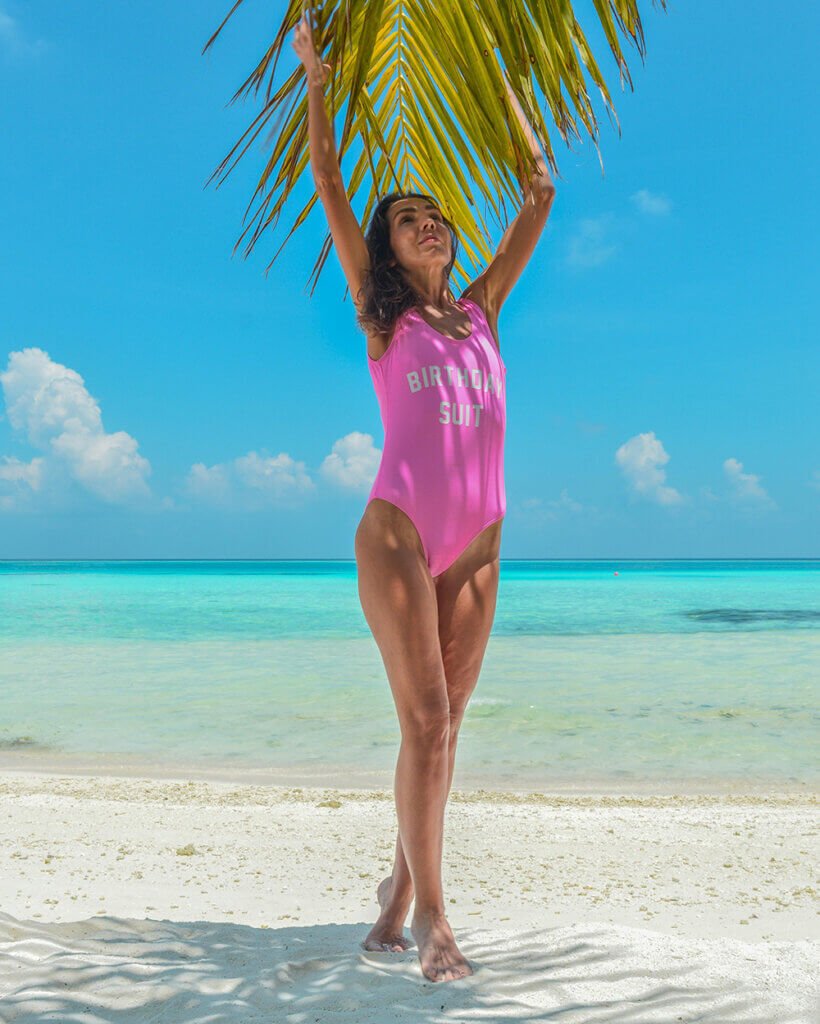
Sustainable swimwear represents the fusion of fashion and environmental responsibility. These pieces are crafted from eco-friendly materials like ECONYL® regenerated nylon or recycled polyester, minimizing environmental impact.
This movement gained momentum in the 2010s due to growing consumer awareness of ocean pollution and textile waste. For brands targeting conscious consumers in Europe and America, a commitment to sustainability—from materials to ethical manufacturing—is no longer a trend, but a core expectation.
Building Your Winning Swimwear Collection
Choosing the right styles is about more than just following trends; it’s about curating a collection that tells your brand’s story.
Know Your Target Audience: Younger shoppers may prefer bold monokinis and metallic fabrics, while mature consumers might favor elegant one-pieces and textured materials. Active women will seek functional designs like rash guards and sporty sets. A clear customer profile is the foundation of purposeful design.
Reflec Your Brand Identity: Your collection should be a cohesive reflection of your brand’s vision. A minimalist brand should focus on clean lines and refined textures, while a glamour-focused label can experiment with plunging necklines and shiny finishes.
Prioritize Fit, Function, and Fabric: High-quality fabrics that retain their shape and color are essential. Incorporating details like adjustable straps and built-in support enhances wearability and drives customer satisfaction. Your choice of fabric—whether textured, shiny, or sustainable—is a key element of your brand’s story.
Conclusion
For new and established labels alike, building a diverse swimwear line is key to standing out in a competitive market. By understanding these twelve core styles, you can create collections that blend fashion trends with lasting quality — pieces your customers will reach for season after season.
At Joybikini, we help global brands turn their creative vision into reality. With custom design, sustainable materials, low MOQs, and ethical production, our team ensures every swimsuit reflects your brand’s identity and quality standards.
